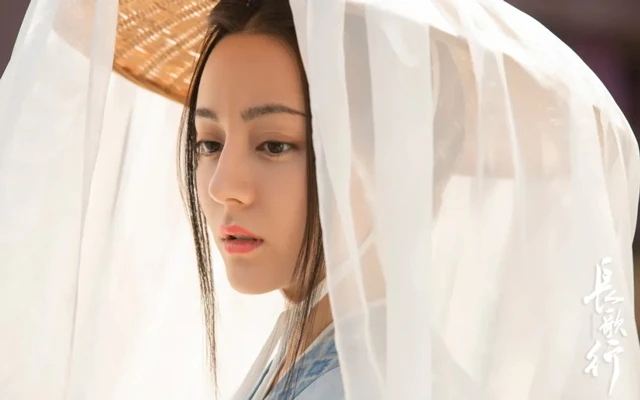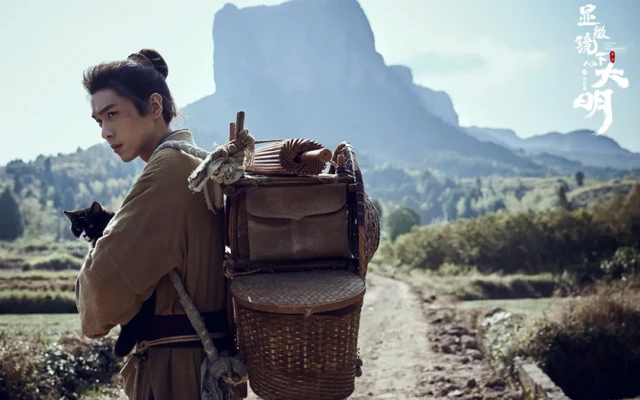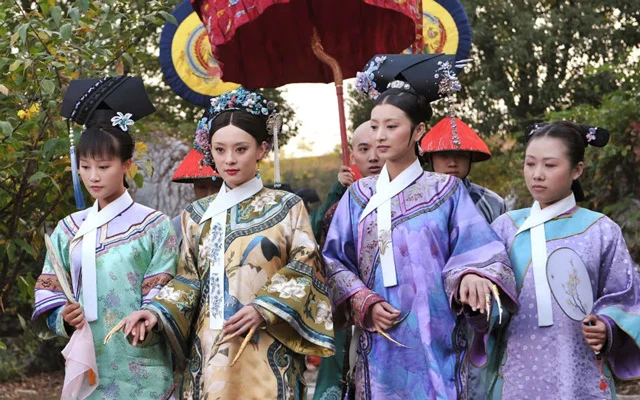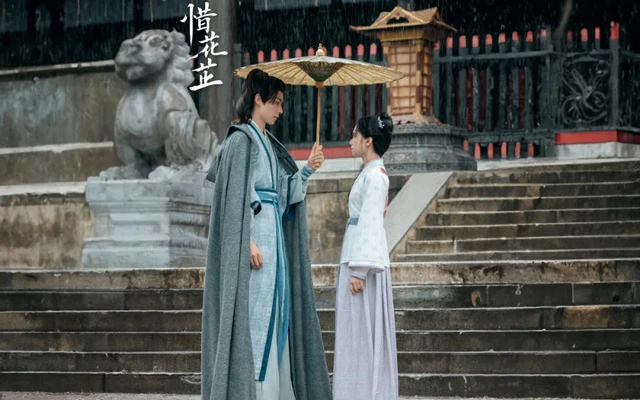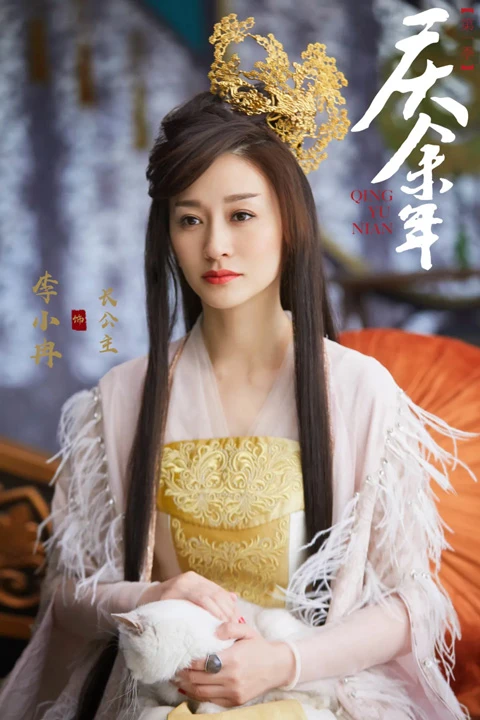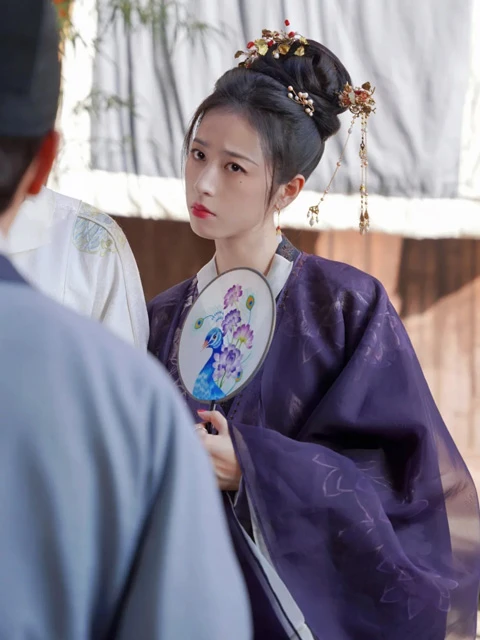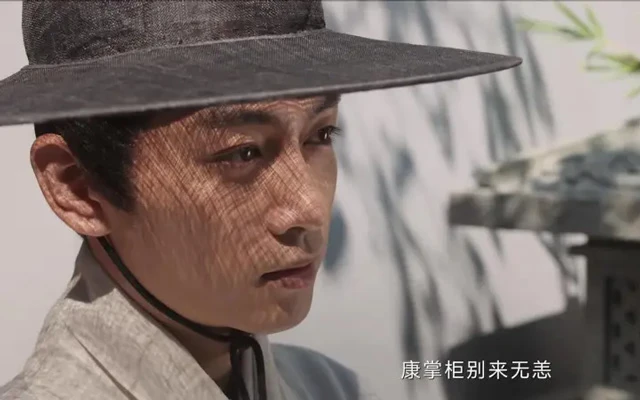In the scorching heat of summer, ancient Chinese people didn't have sunscreen, but they took sun protection seriously. Though the concept of physical sunscreen is a recent development, the approach to sun protection was quite similar: "shade" was key. Follow BAZAAR CHINOISERIE to learn how ancient people protected themselves from the sun.

To shield themselves from the sun while staying mobile, a sun hat is the perfect summer accessory. Surprisingly, "sun hats" aren't a modern invention; they're mentioned directly in ancient texts.
For instance, during the Ming Dynasty, the "Xu Tong Dian" listed various hats, mentioning: "Sun hats were permitted for scholars entering the imperial examinations during the early Ming Dynasty. (遮阳帽,明初士人贡举入监者许戴之。)"
Similarly, the "Jian Hu Ji" describes the "sun hat" as follows: "According to Ming regulations, scholars could wear large sun hats after completing their studies at the imperial college, similar to the ancient bamboo hats or the Tang dynasty silk hats. (明制。士子入胄监满日。许戴遮阳大帽。即古笠。又唐时所谓席帽也。)"
In addition, there were also Weimao (帷帽) popular during the Tang and Song dynasties. These hats had thin gauze attached under wide brims, offering advanced sun protection while also shielding against some wind and dust. Curtain hats, also known as Zhaojun hats, are said to be named after Zhaojun, who wore them when traveling beyond the Great Wall. Made of gauze, curtain hats featured hanging silk nets or thin silk under their wide brims. The gauze was relatively light, so it didn't obstruct vision.
Moreover, sun hats were associated with social status. According to the "History of Ming," different quantities of swan feathers adorned sun hats, with the most esteemed hats featuring three feathers, followed by those with two feathers. Even Wang Qiong, a minister of the Ministry of War, cherished receiving a single feather for his sun hat.
With the advent of sun hats, the need for larger sun umbrellas arose naturally. Today, when choosing a sun umbrella, considerations include weight, sun protection factor, and whether it can be used for both sunny and rainy weather -multi-functional features that truly captivate.
As recorded in the "Records of the Grand Historian," the predecessor of the umbrella was called a "Gai." In ancient times, the most prestigious sun umbrella was the imperial canopy used exclusively by emperors - those enormous silk umbrellas we often see in historical dramas, accompanying emperors on their outings.
However, protection from wind and rain and sunshade were not the primary purposes; the deeper significance of the imperial canopy was to showcase imperial authority. The "Book of Han" records a canopy belonging to Wang Mang: "Eight zhang and one chi tall, adorned with gold and jewel feathers, carried on a secret mechanism four-wheeled carriage." It sounds luxurious and top-tier enough.
Although magnificent, carrying a sedan chair or holding an umbrella was too labor-intensive for emperors during long journeys. Hence, when emperors traveled long distances, they required a more convenient "sunshade artifact," and a relatively simple imperial canopy carriage became their preferred mode of transportation.
For ordinary people, oil-paper umbrellas served as their primary tools for rain protection and sunshade. Oil-paper umbrellas are traditional Chinese handicrafts, originating from paper umbrellas. Their canopy is made of traditional cotton paper, and the ribs are crafted from Phoebe zhennan wood, coated with a layer of pure tung oil. This not only makes the umbrella waterproof but also adds a unique gloss and texture. While they may lack the advanced sun protection coatings of modern sun umbrellas, they still provide some shade from the sun.
When we face the scorching sun in summer, with high exposure of skin, our first thought is to put on sun-protective clothing to shield our skin from sunburn. And our needs extend beyond just UV protection; we also desire a cool, lightweight, and comfortable wearing experience.
This concept of summer clothing, combining sun protection with coolness, was also prevalent in ancient times. They would drape themselves in excellent fabrics like light gauze, which blocked direct sunlight while ensuring ventilation to prevent the risk of heatstroke, achieving a dual purpose of sun protection and cooling.
In the Ming Dynasty, the "Zhuo Zhong Zhi" recorded: "On the fourth day of the third month, palace attendants changed into silk clothes. On the fourth day of the fourth month, palace attendants changed into gauze clothes." This shows that as the seasons changed, ancient Chinese people also engaged in a wardrobe overhaul, switching to cooler and more comfortable attire. In ancient clothing production, fabrics woven from silk, such as gauze and luó (gauze-like silk), were representative materials. Both had finely porous surfaces, were lightweight, breathable, and provided sun protection, making them more suitable for hot weather.
However, despite the merits of gauze clothing, it was exorbitantly expensive, affordable only to wealthy families, akin to the ancient version of summer luxury. For ordinary people, they tended to opt for more economical alternatives: ramie clothing. Ramie fabric, made from the fibers of plants like ramie, shares the characteristics of being lightweight, breathable, and insulating, providing a practical choice for the common folks during summer.
As early as a thousand years ago, ancient Chinese people learned to make ramie clothing to cope with the heat of summer. Wearing ramie clothing in summer was indeed lightweight and refreshing. Emperor Wen of Wei also recorded in "Shuo Zhu Wu": "Jiangdong ramie is excellent, even better than silk, as white as snowflakes, as light as cicada wings. (江东葛为可,宁比总绢之繐辈,其白如雪华,轻譬蝉翼。)" These descriptions vividly illustrate the thinness of ramie clothing and its prominent position in the summer wardrobe.
The term "sun protection" today is often closely associated with whitening. Building beauty on "whiteness" is not a modern concept either. Rewind about eighteen hundred years ago, in Cao Zhi's "Ode to the Goddess of the Luo River," he depicted the image of a divine woman with "a slender neck and fair skin as if bathed in dew, with no need for cosmetics" - in Cao Zhi's imagination, the divine woman's beautiful neck revealed fair skin. In various literary works, descriptions of beautiful faces often revolve around the principle of "fair skin hides imperfections."
The pursuit of fair skin by women has never ceased. In ancient times, they would use lead powder to achieve whitening effects. This tradition continued for several dynasties, with the color invariably judged against the standard of "whiteness." Some powders could even repair sun damage, but after prolonged use, most of these powders inflicted varying degrees of harm on the body.
Nowadays, the pursuit of fairness has shifted to sun protection. Some girls wrap themselves up more and more tightly in summer, upgrading their equipment from head to toe, emphasizing a sense of beauty that has never been sunned. Protecting oneself from the sun under intense rays is indeed a necessary procedure, but aesthetics are multidimensional. There's no need to be anxious about fairness and hoard sunscreen products excessively.
Although ancient times lacked a dazzling array of sunscreen products, people, with their keen insights into nature, used their wisdom to create a series of sun protection methods. Today, with the continuous upgrading of sun protection equipment and the deepening of sun protection concepts, everyone can choose suitable sun protection products according to their needs. As we enter the season of rising temperatures, enjoy the sunshine and breeze while remembering to protect your skin.


